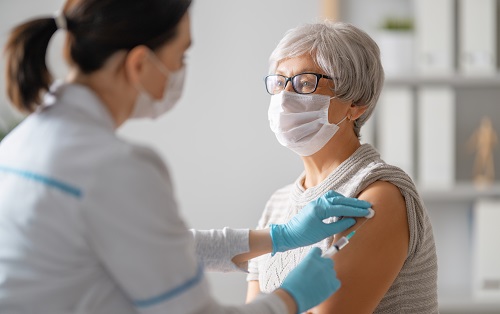Herpes simplex Cold sores, fever blisters Postherpetic neuralgia
Blistering Vesiculation, blister formation
herpes zoster treatment infection
Intense itching, extreme itchiness pain control
Nerve pain, neuropathic pain defense mechanism
Shingles avoidance, herpes zoster prophylaxis
neuralgia
Active treatment Vaccination herpes zoster Prevention
Incidence rate gets higher after COVID-19
immune system
After the COVID-19 outbreak, interest in respiratory infections increased significantly. Some skin diseases are also caused by viruses. Herpes simplex and herpes zoster are examples. The two are entirely distinct, but the typical blisters on the skin make them indistinguishable. Heo Chang-hun, a professor of dermatology at Seoul National University Bundang Hospital, and Kim Hyeon-jo, a dermatologist (Director of CNP Cha & Park Dermatology Cheonan Buldang Branch), discussed the differences between herpes simplex and herpes zoster from symptoms to treatment in detail.
Reporter, Han Jeong-seon : Herpes simplex and herpes zoster are always confusing to distinguish what kind of disease.
Heo Chang-hun, a professor : Although viruses cause both, herpes simplex is caused by infection and reactivation of 'the herpes simplex virus, while herpes zoster is caused by reactivation of 'the varicella-zoster virus. In particular, herpes zoster is called varicella when it is first infected, as the name of the varicella-zoster virus indicates. Symptoms emerge when the dormant virus is reactivated and the immune system debilitates. The infectivity increases, especially when blisters appear, so particular care is required.
Reporter, Han Jeong-seon: How can people easily differentiate between the two diseases?
Heo Chang-hun, a professor: Blisters occur in both diseases, but it is easy to distinguish them by location and pain. Herpes simplex virus is divided into two subtypes: type 1 occurs around the lips, and type 2 occurs around the genitals. Type 2 is classified as a sexually transmitted disease, both of which cause severe itching. On the other hand, herpes zoster appears along the ganglion and mainly on the trunk. Its dissimilarity from herpes simplex is that it is accompanied by pain rather than itching.

Reporter, Han Jeong-seon: Do the blisters in both diseases sometimes make scars like 'pitted'?
Heo Chang-hun, a professor: The blisters in both diseases are small and relatively shallow, and in most cases, they recover to normal in 2-4 weeks. Occasionally, deep blisters can make a small scar, but they do not create pitted scars like smallpox. However, temporary discoloration or loss of pigmentation may occur at the blister site.
Reporter, Han Jeong-seon: Research papers demonstrated that herpes simplex has increased after COVID-19.
Heo Chang-hun, a professor: Studies have shown that the incidence of herpes simplex and herpes zoster has increased. Some cases are reported among the vaccinated people because stress, fever, and immunological changes caused by COVID-19 reactivate the herpes viruses. In other words, if herpes simplex or herpes zoster occurs after infection with the Corona 19 virus, the systemic immune status has been dramatically reduced. In this case, the patient's condition should be closely monitored because there is a high possibility of progressing to severe disease.
Reporter, Han Jeong-seon : How are herpes simplex and herpes zoster treated?
Hyunjo Kim Specialist: Herpes simplex has milder symptoms than herpes zoster, but if the bullous lesion is left untreated, the inflammation deepens, leaving aftereffects such as pigmentation, loss of pigment, and indentation scars. In particular, Herpes simplex around the eyes can cause keratitis and corneal ulcers, leading to blindness, so antiviral drugs should be used promptly. Acyclovir, a representative antiviral agent, is used in intravenous, oral, and topical applications depending on the severity of symptoms.
On the other hand, herpes zoster requires more aggressive treatment because it can leave severe aftereffects, such as severe pain and paresthesia at the lesion site and postherpetic neuralgia. The goal of treatment for herpes zoster is to suppress pain, suppress the spread of the virus and secondary bacterial infection, and prevent and treat complications such as postherpetic neuralgia.
At the initial stage of blistering, pain can be relieved by wet dressing on the lesion, but the use of antiviral ointment is ineffective. In treating herpes zoster, it is essential to administer an antiviral drug within 72 hours of the rash. The timely antiviral agent treatment can promote the healing of skin lesions, shorten the acute pain period, and reduce complications such as postherpetic neuralgia.
If there is no improvement even with oral antiviral drugs and analgesics, intravenous injection of antiviral drugs in a tertiary hospital is needed. Herpes zoster is associated with decreased immunity and excessive stress. Thus, receiving antiviral treatment by intravenous injection is adequate while reducing activity to rest through hospitalization.

Reporter, Han Jeong-seon: Unlike herpes simplex, herpes zoster can be prevented by vaccination.
Hyunjo Kim Specialist: In 2006, when the FDA approved the herpes zoster vaccine, vaccination was recommended for those aged 60 and over. And since 2011, the recommended age for vaccination has been lowered to 50 years or older. In general, herpes zoster complications such as postherpetic neuralgia are low in people under 50 years of age. Still, the incidence of herpes zoster complications increases after 50.
The herpes zoster vaccine was reported to reduce the incidence of shingles by 51% and postherpetic neuralgia, a complication of herpes zoster, by 66%. Even if vaccination would not preclude the occurrence, vaccination is still vital because it can diminish the severity of symptoms and the pain of postherpetic neuralgia.
The existing herpes zoster vaccine demands one vaccination after the age of 50, but a new vaccine approved by the FDA in 2017 and scheduled to be introduced in Korea requires two doses. This vaccine is reported to preclude herpes zoster by 97% and postherpetic neuralgia, which is a complication, by 91%.

Reporter, Han Jeong-seon: What are the likely complications when the treatment time for herpes simplex and herpes zoster is delayed?
Hyunjo Kim Specialist: If herpes simplex is left untreated, the inflammation worsens, and various scars, including pigmentation, loss of pigment, and pitted scars, occur at the lesion site. Also, herpes simplex around the eyes can yield blindness.
Herpes zoster provokes various complications depending on the affected area. Herpes zoster around the eye can cause conjunctivitis, retinitis, glaucoma, protrusion of the eyeball, and extraocular muscle paralysis, conducting to blindness. In addition, if the varicella-zoster virus invades the facial and auditory nerves, ear pain, tinnitus, and facial paralysis may occur. Moreover, invasion of the meninges can lead to encephalitis and even meningitis. Also, if it appears in the buttocks, it can cause bladder dysfunction, making it difficult to urinate.
Another thing to remember is that even if herpes zoster is cured, the varicella-zoster virus continues to exist in the body in a latent state. In other words, adults over the age of 50 should receive the herpes zoster vaccine because it can be reactivated at any time and cause disease.
Reporter, Han Jeong-seon: What are the daily life tips to prevent herpes simplex and herpes zoster?
Hyunjo Kim Specialist: It is crucial to prevent the reactivation of the virus dormant in the body. Above all, mental tension, physical fatigue, smoking, excessive drinking, etc., can decrease immunity, so it is critical to managing the condition well while controlling these risk factors. Regular intake of vitamins and minerals and regular exercise is fundamental to maintaining immunity.


